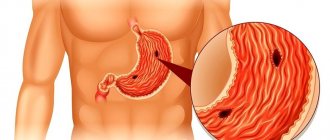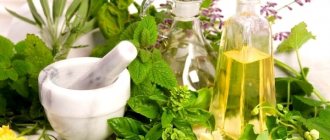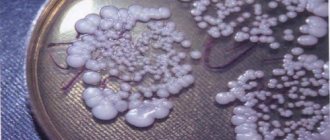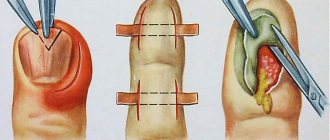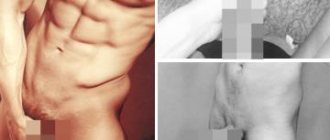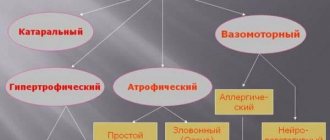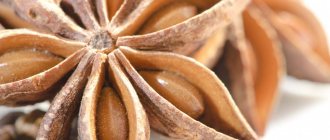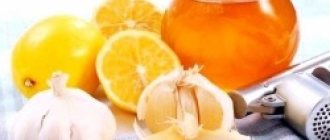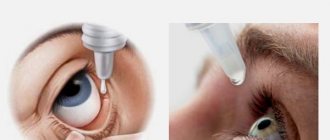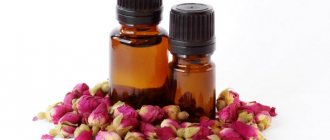Erosion of the esophagus, the treatment of which must be timely, develops due to constant irritation of the walls of the organ with acid during reflux. First, inflammation is observed, and symptoms typical of esophagitis are present.
The patient is worried about heartburn, problems with swallowing and a sour taste in the mouth (more about other symptoms of the disease). Untimely normalization of acidity leads to damage to the deep layers and it is already necessary to treat esophageal erosion.
An integrated approach involves the use of medications aimed at getting rid of the effects of reflux, physiotherapeutic procedures to restore the mucous membrane and following a diet to create favorable conditions for the restoration of the damaged organ. Let's find out how to treat esophageal erosion.
Complex treatment of erosion
Erosion is diagnosed already at an advanced stage, when a person is worried about severe symptoms, pain and difficulty swallowing. It can be triggered by exposure of the esophagus to chemicals, taking certain medications, diaphragmatic hernia, weakening of the esophageal sphincter, or congenital muscle weakness.
The disease develops gradually; if treatment is started promptly at the stage of esophagitis, erosion can be prevented. If damage to the wall of the esophagus has already occurred, immediate treatment should be started to prevent dangerous complications.
The disease can lead to internal bleeding, damage to the deep layers of the mucosa, thrombosis, and neoplasms.
Before treatment, a standard examination of the esophagus is carried out using instrumental diagnostic methods and laboratory tests. Once the diagnosis is made, the doctor prescribes treatment taking into account all concomitant diseases. Therapy will be aimed at improving the patient’s well-being (through the use of symptomatic medications), eliminating reflux esophagitis and restoring the integrity of the mucous membrane.
Treatment of erosion of the stomach and esophagus includes:
- drug therapy;
- physiotherapeutic procedures;
- therapeutic diet No. 1 ;
- folk remedies;
- operation.
Despite the skepticism of doctors towards traditional methods of treatment, many agree with the need to use home recipes as an additional means of maintaining the condition of the esophagus and improving well-being.
What is linear erosion of the esophagus
There are superficial and linear erosions. Superficial defects during development involve increasingly deeper layers of the mucous and submucosal membranes in the inflammatory process, resulting in the formation of ulcers.
Linear erosion is an inflammatory damage to the esophagus, characterized by the spread of the process deep into the esophageal wall, initially with the formation of small ulcers, which then turn into diffuse lesions. With this type of development of the process, scar-adhesive deformations of the organ occur, disrupting the configuration and function of the organ. Such changes, of course, cannot be cured quickly.
Inflammation of the esophagus is a common pediatric pathology, but in a child it usually occurs in the form of edematous and catarrhal forms (without the formation of mucosal defects).
Treatment of esophageal erosion with medications
Drug therapy includes taking prokinetics , alginates and antacids. The drug Almagel is prescribed after meals and before bedtime for mild symptoms of inflammation. Prokinetics are extremely important in the complex treatment of erosion; they shorten the period of exposure to hydrochloric acid on the walls of the esophagus. For this purpose, the medicine Motilium or Domperidone .
Proton pump inhibitors are also prescribed to reduce the negative effects of gastric contents on the esophageal mucosa. Taking alginates is necessary to protect against reflux; they create a thick foam on the surface of the esophagus, a kind of barrier.
We continue to study the question of how to treat esophageal erosion.
Medicines to protect its mucous membranes:
- the medications Sucralfate and Liquiriton are indicated for severe symptoms of inflammation;
- painkillers and sedatives Drotaverine , Solcoseryl , sea buckthorn oil are prescribed for healing damaged areas of the esophagus;
- H2-blockers of histamine receptors, like antacid drugs, are necessary for a complex effect in order to protect the mucous membrane from gastric juice.
Treatment necessarily includes combination medications. The patient takes vitamin complexes and restoratives.
Non-drug treatment
From the moment erosion is diagnosed, the patient must gradually abandon habits that indirectly or directly affect the state of the digestive organs. This applies to smoking, drinking alcohol, chronic lack of sleep, and resting in a horizontal position after eating.
Causes of development of esophageal erosion
Erosion of the esophagus is preceded by the following pathological conditions:
- Increased intrauterine pressure;
- Weakened muscle tone of the esophageal walls;
- Reduction in the length of the esophagus due to an inflammatory-scarring process or tumor;
- Atrophy of the left lobe of the liver;
- Stretching of the esophageal opening of the diaphragm;
- Absence of adipose tissue under the diaphragm;
- Curvature of the thoracic spine in the form of kyphosis, which often occurs in older people.
All of the above factors contribute to the appearance of sliding, axial hernias, after which erosion of the esophagus develops.
Esophageal erosion: diet
A diet must be prescribed for erosion of the esophagus and stomach. Diet for esophageal erosion excludes the following foods:
- spicy and salty dishes;
- sauces and spices;
- raw hard vegetables and fruits;
- carbonated drinks, alcohol, sour juices and strong coffee.
Gentle nutrition is complemented by the following dishes:
- fish and meat broths;
- vegetable soups;
- steam cutlets;
- soft fruits and vegetables;
- various cereals;
- from liquids - weak tea, clean water, compote.
Solid food will irritate the esophagus even more, so everything needs to be chewed thoroughly and swallowed in small portions. While eating, you may feel a strong need to drink, but this is not recommended so as not to disrupt the digestion process. It is necessary to exclude fried and hot foods, that is, everything that can injure the esophagus.
What does esophageal erosion lead to?
Esophageal erosion is considered a fairly serious disease, although patients often attach little importance to it, since clinical manifestations of erosion are absent or mild.
However, if erosion is not treated, a person may experience a number of secondary pathologies:
- Bleeding. The most dangerous possible consequence of erosion is bleeding into the esophagus. This condition occurs when a blood vessel in the wall of this organ is damaged. In this case, the patient vomits with an admixture of scarlet blood. This complication is more typical for young people, mainly men, who often drink alcohol and smoke a lot.
- Peptic ulcer disease. Another complication of the disease is ulcerative lesions of the esophageal mucosa. The disease can be acute or chronic with periodic relapses. Peptic ulcer disease against the background of erosion often develops in older people.
- Tumor. Against the background of esophageal erosion, some people may develop benign and malignant tumors.
- Impaired blood flow. Erosive processes can cause thrombosis of esophageal vessels, disruption of cell nutrition and tissue necrosis.
- Violation of the structure of the esophagus. In most patients, erosion leads to the formation of connective tissue scars. Such scars disrupt the normal structure of the esophagus and prevent the passage of food.
Physiotherapeutic procedures
How else to treat esophageal erosion? The following physiotherapeutic procedures may be prescribed:
- UHF therapy;
- inductothermy;
- ultrasound therapy;
- medicinal electrophoresis;
- electrical stimulation;
- phonophoresis;
- magnetotherapy.
Inductothermy involves exposure to a high-frequency magnetic field. Its positive effect is to increase blood flow, reduce the inflammatory process, and reduce the excitability of nerve receptors. The procedure helps to numb the damaged area, and after several sessions you can observe an increase in calcium in the tissues, resorption of hematomas and a decrease in blood pressure.
Magnetic therapy is necessary for erosion in order to relieve spasms and relieve pain. It has a strong anti-edematous and anti-inflammatory effect. At the same time it improves the emotional and psychophysical state.
Drug electrophoresis is carried out using analytical preparations. In case of erosion, this procedure is necessary for the treatment of concomitant diseases, when taking tablets orally can lead to exacerbation of inflammation and complication of erosion.
Laser therapy is no less useful for the esophagus. Penetrating into the deep layers, the beam activates the process of regeneration and healing of damaged tissues. Laser therapy also has a general strengthening effect.
Esophageal erosion: treatment with folk remedies
Treatment of esophageal erosion with folk remedies has the following goals:
- decreased acidity of gastric juice;
- stimulation of erosion healing;
- protection of the esophagus from hydrochloric acid;
- elimination of inflammation;
- getting rid of heartburn.
Anti-inflammatory medicinal preparations are used to neutralize inflammation. The course of treatment lasts an average of 3 weeks. is prepared from the fruits of anise , yarrow and three-leaf watch . Take half a glass after meals. A decoction of St. John's , calendula and chamomile should be drunk before meals.
Carrot juice is suitable to speed up regeneration . It is recommended to drink half a glass of it daily. For this purpose, sea buckthorn oil is also taken a teaspoon before meals. This is how esophageal erosion is treated with sea buckthorn oil.
To protect the esophagus, potato starch , which envelops the mucous membrane. Rice broth can also create a protective barrier . To eliminate heartburn, a decoction of mint or calamus and potato juice will help.
Vegetable juices are a simple and effective method of treatment
Potato juice is an inexpensive and effective treatment for esophageal erosion. It is extremely simple to prepare; using a juicer or a regular meat grinder, the juice of two potatoes is extracted (squeezed) and consumed immediately. You can use potato juice as an “ambulance” in case of another exacerbation of erosion. Quickly reduces inflammation and relieves pain. Potato juice promotes accelerated tissue regeneration, has no significant contraindications for use, and is always at hand. If it is not possible to squeeze out the juice, use raw peeled potatoes during an exacerbation. The only caveat is that you need to chew the vegetable very carefully so as not to irritate the already provoked mucous membrane with fiber.
Carrot and cabbage (white) juices have a similar effect. Drink both when heartburn and chest pain occur, and for preventive purposes, 2 times a day, a glass. You should not eat cabbage or carrots during an exacerbation; they increase pain and inflammation (even when stewed).
Photo gallery: vegetable juices indicated for esophageal erosion
When is surgery needed?
Surgical treatment will be required for complications. Failure to follow a diet and refusal of drug treatment can lead to multiple erosions, hyperplasia, and bleeding. All these conditions can become an indication for surgical treatment, which is determined after a comprehensive examination and risk assessment.
You should consult a doctor if the following symptoms appear:
- regular reflux of food into the oral cavity;
- gagging and frequent belching ;
- heartburn after eating;
- sensation of a foreign body in the chest area;
- pain when lying down after eating;
- vomiting blood;
- increased salivation;
- discomfort when swallowing hard foods.
Treatment of esophageal erosion has a favorable prognosis. If all risk factors are eliminated, healing of the mucous membrane occurs quickly and complete recovery is possible within a month and a half.
Clinic and symptoms of esophageal erosion
Sometimes the clinical picture of esophageal erosion can be asymptomatic, blurred and unclear. But more patients complain of dull or sharp pain in the chest, in the abdominal cavity, or with various irradiations, which resemble the pain of angina pectoris. Pain and discomfort usually occur when eating or changing body position. Painful sensations may be accompanied by a feeling of fullness and bloating, which tend to decrease when the body assumes a vertical position.
Symptoms of esophageal erosion are as follows:
- Painful swallowing (dysphagia);
- Belching;
- Hiccups;
- Regurgitation;
- Vomit;
- Increased secretion of saliva in the mouth;
- Unpleasant odor from the mouth.

